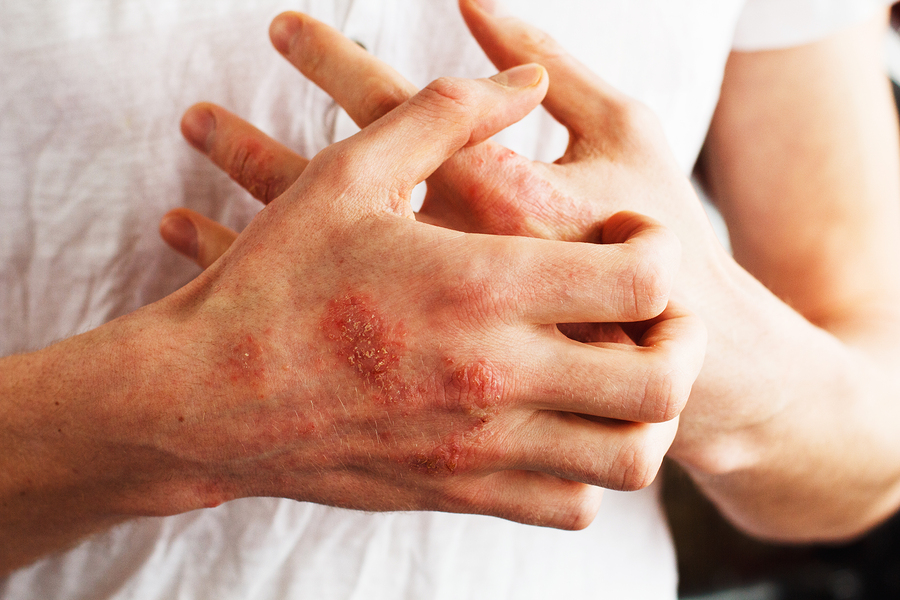
Excimer laser is a form of targeted phototherapy that aims a high intensity ultraviolet B (UVB) light dose of a very specific wavelength (308 nanometers) directly at the psoriasis plaques through a hand-piece applied to the skin. UVB improves certain skin conditions by shutting down the immune cells of the skin which are overactive in many skin diseases. The effect of UVB is similar to sunlight. The aim of treatment is to deliver a dose that induces visible redness in the psoriatic lesion but that does not induce a blister or burn.
Initially, most patients are recommended to have treatment two to three times per week, with at least a 48-hour break between treatments. The first few treatments usually take only several minutes. The length of exposure is gradually increased aiming to turn the skin slightly pink. Your provider will determine the dose of laser light based on the thickness of your psoriasis plaques. During the procedure, you will be given dark goggles to protect your eyes.
Significant side effects of excimer laser are uncommon. Laser therapy is generally safe, but some people have reported side effects after treatment, including temporary redness, itching, burning, stinging, blistering, darkening/lightening of the skin, and scarring. Mild burns are usually at their worst about 8 hours after the treatment and tend to fade over the next few days. When treatment is properly administered, severe blistering or burning is rare, though it can happen. Since the laser light never touches the surrounding skin, it reduces the risk of UV radiation exposure. Excessive exposure can cause premature aging of the skin and may increase the risk of skin cancer.
Your provider should be told if you are starting any new medications, as some medications can make the skin abnormally sensitive to UVB.